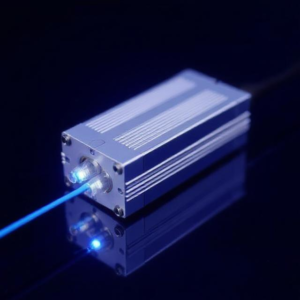What is Fiber Optics?
Fiber optics is a technology that uses thin strands of glass or plastic, known as optical fibers, to transmit light signals. These signals are used to carry information, such as data, voice, and video. Fiber optics can be thought of as a super-fast highway for light to travel, allowing us to send and receive information over long distances without loss of quality.
Fiber optics is a cutting-edge technology that powers everything from internet connections to medical devices, offering:
- High-speed data transfer
- Minimal signal loss
- Secure communication

The practice of fiber optics involves careful installation, testing, and adherence to global standards to ensure reliability and performance.
Theory of Fiber Optics: How it Works
Fiber optics works based on the principle of total internal reflection. Here’s a breakdown of how it functions:
- Core and Cladding:
- Core: The central part of the fiber, where light travels. It is made from a special type of glass or plastic.
- Cladding: The surrounding layer, made of a different material with a lower refractive index, which reflects light back into the core.
- Total Internal Reflection:
- When light enters the fiber at a certain angle, it bounces off the cladding, staying inside the core. This process is called total internal reflection, allowing the light to travel long distances through the fiber without leaking out.
- Light Transmission:
- The light signal carries the information. For example, during a phone call, your voice is converted into a light signal, transmitted through the fiber, and then converted back into sound at the other end.
Why Fiber Optics is Efficient
- Low Signal Loss: Light travels through the fiber with minimal loss of quality, even over long distances.
- Speed: Light travels incredibly fast, enabling fiber optics to transmit large amounts of data quickly.
Types of Optical Fibers
There are two main types of optical fibers, each suited for different purposes:
- Single-mode Fibers:
- These fibers have a very small core and allow light to travel in only one path, reducing the chance of signal distortion.
- Best for long-distance communication.
- Multi-mode Fibers:
- These fibers have a larger core and allow light to travel in multiple paths.
- Used for shorter distances, such as within buildings or campuses.
Standards in Fiber Optics
Fiber optics is used in a variety of industries, including telecommunications, the internet, medicine, and military applications. To ensure reliability and optimal performance, several standards and best practices guide fiber optic systems:
1. Installation:
- Splicing: Joining two fiber optic cables together. Proper splicing is critical to avoid signal loss.
- Connectorization: Special connectors are used at the ends of fibers to attach them to devices like routers or computers.
2. Testing:
- Fiber optic cables must be tested to ensure they work properly and that the light signal can travel without excessive loss.
3. Standards:
- ITU (International Telecommunication Union): Sets global standards for fiber optic communication.
- TIA/EIA (Telecommunications Industry Association/ Electronic Industries Alliance): Provides U.S. standards for fiber optic cable installation and performance.
- ISO/IEC: Focuses on the overall performance of optical fibers and their components.
4. Testing and Measurements:
- Special tools are used to test the quality of the fiber, checking for fiber loss, reflectance, and signal strength.
5. Wavelengths and Data Rates:
- Different wavelengths of light (colors) are used to transmit data. Infrared light is commonly used, as it is absorbed less by the fiber.
- Standards also govern the data rates and how much data can be transmitted over fiber at different speeds.
Advantages of Fiber Optics
- Fast Data Transfer: Fiber optics can transmit data at extremely high speeds, making it ideal for internet, video streaming, and phone calls.
- Long Distance: Fiber optic signals can travel much farther than traditional copper cables without losing quality.
- Security: It is challenging to tap into a fiber optic cable, making it a secure method of transmitting sensitive information.
- Higher Capacity: Fiber optics can carry vast amounts of data compared to metal wires, enabling multiple connections and large data transfer simultaneously.
Challenges and Maintenance
- Cost: Installing fiber optic systems can be expensive, particularly when laying down new cables.
- Fragility: Fiber optic cables are fragile and can break if bent or mishandled.
- Installation: Installing fiber optic cables requires careful handling to prevent damage and signal loss.
In conclusion, fiber optics is an essential technology that powers modern communication systems, offering high-speed, low-loss, and secure data transmission. However, it requires careful installation, adherence to global standards, and maintenance to ensure optimal performance.











